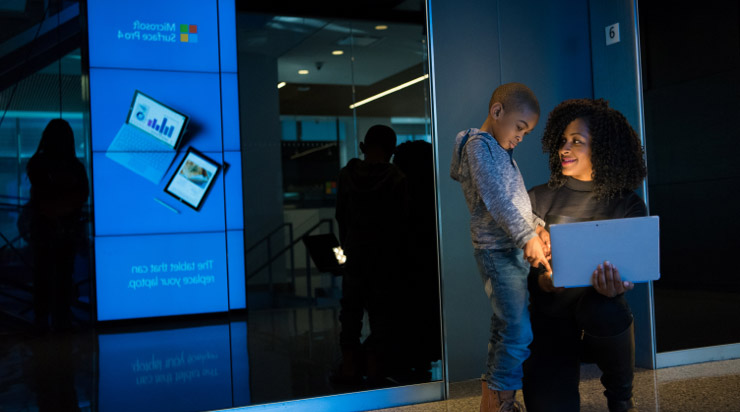The Power of Tech Integration in Modern Restaurants
The restaurant industry is evolving rapidly, and keeping pace means adopting technologies that enhance operations and improve the dining experience. By integrating tools like Point of Sale (POS) systems, inventory management software, and Customer Relationship Management (CRM) platforms, restaurants can streamline operations, increase efficiency, and deliver a better guest experience. Here’s a closer look at how tech integration can transform your restaurant.
The Importance of Tech Integration
Running a modern restaurant involves managing countless moving parts, from inventory and labor to marketing and customer service. Technology serves as the backbone that connects these functions, reducing manual tasks, cutting costs, and offering actionable data insights.
Fast Fact:
Restaurants with integrated technology see a 15–25% increase in operational efficiency, according to a study by Restaurant Technology Insights.
Key Technologies That Boost Restaurant Efficiency
1. Point of Sale (POS) Systems
POS systems are no longer just cash registers. Advanced POS systems function as central hubs that connect front-of-house service with back-of-house operations.
Benefits:
- Tracks real-time sales data to identify top-performing menu items.
- Integrates with inventory management tools to track stock levels with every transaction.
- Allows for mobile and contactless payment options that enhance the guest experience.
Real-World Impact:
A casual dining chain upgraded to a cloud-based POS system and reduced order processing time by 15%, resulting in quicker service and improved customer satisfaction.
2. Inventory Management Tools
Managing inventory is simpler and more accurate with integrated tools that provide real-time tracking. These systems monitor stock levels, predict shortages, and generate reports on usage trends.
Why It Matters:
- Restaurants using inventory management software report a 20–30% decrease in food waste, as noted by National Restaurant Association research.
- Automated reordering eliminates the guesswork of restocking.
Example:
An upscale bistro adopted an AI-driven inventory platform and saved $25,000 annually by minimizing overordering and spoilage.
3. Customer Relationship Management (CRM) Software
A CRM system enables restaurants to better understand their customers by consolidating data such as order history, preferences, and feedback.
Advantages:
- Creates personalized marketing campaigns based on customer preferences.
- Tracks loyalty program points automatically.
- Helps improve retention rates with targeted email or text promotions.
Stat Insight:
Businesses using CRM tools have seen a 27% increase in customer retention rates, according to data from Campaign Monitor.
4. Integrated Reporting and Analytics
When all your systems work together, the data they collect provides a full picture of restaurant performance. From sales reports to labor cost analyses, integrated analytics help operators make informed, data-driven decisions.
Key Features:
- Sales trend forecasting.
- Labor cost analysis tied to scheduling.
- Insights into customer preferences for menu development.
Restaurants that regularly utilize data analytics to guide decisions tend to outperform competitors by 8–12% in annual revenue.
Enhancing Customer Satisfaction with Tech Integration
Beyond improving operational efficiency, technology integration has a direct impact on the guest experience. Here’s how:
Faster Service
- Mobile POS systems allow servers to place orders directly from the table, reducing wait times.
- Integrated kitchen display systems ensure orders are prepared accurately and on time.
Stat Insight:
Quicker service has been shown to boost customer satisfaction scores by 24%, according to Technomic research.
Customization and Convenience
- Loyalty programs tied to your POS and CRM make it easy for customers to earn rewards and redeem them seamlessly.
- Online ordering systems integrated with inventory automatically communicate availability, preventing out-of-stock frustrations.
Contactless Dining Options
Demand for contactless options continues to grow. Integrated systems enable easy online reservations, QR code menus, and payment options, catering to preferences for touch-free interactions.
The Challenges of a Non-Integrated Tech Stack
Without integration, managing different tools can become overwhelming and inefficient. For example:
- POS systems that can’t talk to inventory management tools result in stock discrepancies.
- CRM platforms disconnected from sales data miss key opportunities for personalized marketing.
- Lack of consolidated reporting makes it difficult to identify inefficiencies or operational bottlenecks.
Choosing the Right Solutions
To maximize the benefits of tech integration, select software specifically designed for the restaurant industry. Consider platforms like Restaurant365, which easily integrate POS, inventory, and CRM features into one cohesive system.
Steps for Successful Tech Integration
- Assess Pain Points:
Identify the areas of your restaurant that need the most improvement, whether it’s inventory management, labor scheduling, or marketing. - Choose Scalable Solutions:
Invest in platforms that can grow with your business to avoid costly replacements down the line. - Train Your Team:
Ensure staff understand how to use the new tools effectively. Hold workshops and provide training resources to maximize adoption. - Track Performance:
Use analytics and reporting tools to monitor the impact of your integrated systems and make adjustments as needed.
Final Thoughts
Integrated technology is the future of restaurant operations. From streamlining daily workflows to enhancing customer satisfaction, it equips restaurants to stay ahead in an increasingly competitive market.
At TRIS, we specialize in helping restaurants select and integrate the right technologies for their unique needs. If you’re ready to optimize operations and improve guest experiences, we’re here to guide you through every stage of the process.





Setting up cybersecurity software early in your business can protect valuable company and customer data. A great place to start is purchasing antivirus software, which guards computers and networks against viruses and other malicious attacks. You may also consider purchasing a business VPN to ensure only authorized users can access your network.